Blood Stagnation
The information provided here is not a replacement for a doctor. You shouldn't use it for the purpose of self-diagnosing or self-medicating but rather so you can have a more informed discussion with a professional TCM practitioner.
At a glance
Preliminary reading: What is a pattern? The concept of Blood
Key attributes
Chinese name: 血瘀 Pinyin name: Xuè Yū
Pattern nature: Full
Pattern hierarchy: General pattern with specific forms like Liver Blood Stagnation or Heart Blood Stagnation
Common combinations: Qi And Blood Stagnation
Causes
Precursor patterns: Qi Deficiency Qi Stagnation Heat in the Blood and nine other possible precursors
Common causes: 1. Emotional stress, 2. Traumas or severe injuries, 3. Difficult childbirth, abortion, miscarriage and menopause
Diagnosis
Common symptoms: Lumps Dark face Purple lips Purple nails Painful period and five other symptoms
Pulse type(s): Choppy (Se), Firm (Lao), Wiry (Xian)
Tongue description: Purple tongue
Treatment
Treatment principle: Invigorate Blood and Qi, Unblock the Liver Stagnation
Common formulas: Tao He Cheng Qi Tang Da Huang Mu Dan Pi Tang Gui Zhi Fu Ling Wan and six other formulas
Pathology
Blood Stagnation - also often referred to as "Blood Stasis" - is where the Blood flow is heavily restricted in all or parts of the body. It is one of the most important diagnostic conditions in Chinese Medicine because it is frequently the cause of intractable pain syndromes anywhere in the body.
It differs from Qi Stagnation: pain associated with stagnant Qi tends to move and change locations and intensity of sensation, while Stagnant Blood results in a fixed stabbing pain. Also when a stagnant Qi doesn't lead to skin symptoms, Blood Stagnation often leads to signs on the skin such as purple blotches or bruises, purple lips, face and nails.
The causes for Blood stagnation can include:
- Qi Stagnation: this is the most common cause of Blood Stagnation since Qi moves Blood. As a result if Qi stagnates then Blood stagnates.
- Qi Deficiency: again, Qi moves Blood. Therefore it is logical that if Qi becomes too weak, this would result in its Blood-moving function not being performed optimally.
- Heat in the Blood: this may cause the Blood to condense and therefore stagnate.
- Blood Deficiency: since Qi and Blood move together, a Blood Deficiency over the long term may result in a Qi Deficiency which, as explained above, may induce Blood Stagnation.
- Interior Cold: Cold congeals Blood which slows down its flow.
- Phlegm: although Phlegm doesn't directly induce Blood Stagnation, it is an aggravating factor.
- Liver disorders: since the Liver "stores the Blood".
- Spleen disorders: since a function of the Spleen is to maintain Blood in the vessels.
- Traumas or severe injuries
- Difficult childbirth, abortion, miscarriage and menopause
- Some gynecological diseases
Blood Stagnation is a condition of toxicity which the main distinguishing symptom is pain that is fixed in one place, and is of a boring or stabbing character. Most commonly the pain is located in the lower abdominal area.
To determine this, lie on your back with legs flexed, then rather gently at first, palpate the lower abdomen below the umbilicus, especially the left and right sides. If there is severe Blood Stagnation, you will usually feel pain upon palpation. Milder Stagnation may result in lumps or swelling in the area.
Other symptoms of Blood Stagnation can include traumatic swelling, blotchy skin, increase in skin capillaries, red spots and varicosities, coarseness of the skin and discoloration, itchy scalp, shoulder stiffness, dizziness and numbness. The tongue may exhibit a purplish cast especially noticeable on the sides, and there may be a tendency to bleed. There may be a feeling of abdominal fullness, even when there isn't any, especially in women before menses.
The Organ that is most frequently affected by Blood Stagnation is the Liver. Other Organs that are commonly affected are the Heart, Lungs, Stomach, Intestines and Uterus.
Causes
Precursor patterns: Blood Stagnation can derive from Qi Deficiency Qi Stagnation Heat in the Blood Phlegm Damp-Phlegm in the Lungs Phlegm Misting the Heart Phlegm-Fire harassing the Heart Phlegm Fire harassing the Pericardium Pericardium Qi Stagnation Cold-Phlegm in the Lungs Phlegm-Heat in the Lungs Lung and Heart Qi Deficiency
Emotional stress: Prolonged or intense emotional stress disturbs the Mind (Shen) and causes disharmony in Organs, Qi and Blood. According to TCM, all 7 emotions (Anger, Joy, Sadness, Worry, Pensiveness, Fear, and Shock) has some effect on Qi and Blood Stagnation. Pensiveness and Worry are supposed to knot Qi the most and cause Qi Stagnation, which then lead to Blood Stagnation. On the other hand, the Liver stores the Blood and this function can be largely disturbed by anger.
Traumas or severe injuries: Traumas or severe injures such as bruises, sprains and swelling can cause Blood stasis under skins.
Difficult childbirth, abortion, miscarriage and menopause: Difficult childbirth, abortion, miscarriage and menopause or other genealogical diseases can cause Blood Stagnation.
Diagnosing Blood Stagnation
Diagnosing a pattern in Chinese Medicine is no easy feat and should be left to professional practitioners. In particular one has to know how to differentiate between different types of pulses and tongue coatings, shapes and colors as well as learn to read from a long list of seemingly unrelated symptoms.
Pulse type(s): Choppy (Se), firm (Lao) or wiry (Xian)
Tongue description: Purple tongue
Main symptoms: Lumps Dark face Purple lips Purple nails Painful period Abdominal mass Abdominal masses Dark colored blood Boring fixed stabbing pain Dark clots in menstrual blood
Diagnosis commentary: Key characteristic symptoms of this pattern are the pain that is boring, stabbing and fixed in one place. The pain is often around the chest area. Dark or purple face, lips, nails and tongue are the other typical manifestations.
Treating Blood Stagnation
Treatment principle
Invigorate Blood and Qi, Unblock the Liver Stagnation
Herbal formulas used to treat Blood Stagnation
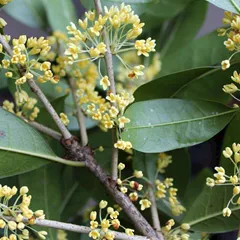


The top herbs in Gui Zhi Fu Ling Wan are Cinnamon Twigs (Gui Zhi), Poria-Cocos Mushrooms (Fu Ling) and Red Peony Roots (Chi Shao)
Gui Zhi Fu Ling Wan
Source date: 220 AD
Number of ingredients: 5 herbs
Key actions: Promotes Blood and lymphatic circulation, thus eleminates Blood Stagnation. Softens and resolves hard lumps such as cysts and fibroids.
Formula summary
Gui Zhi Fu Ling Wan is a 5-ingredient Chinese Medicine formula. Invented in 220 AD, it belongs to the category of formulas that invigorate Blood and dispel Blood Stagnation.
Besides Blood Stagnation, Gui Zhi Fu Ling Wan is also used to treat Qi And Blood Stagnation or Blood Stagnation and Phlegm in the Uterus.
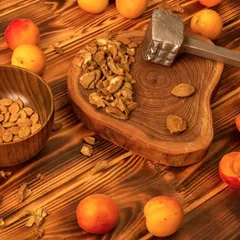


The top herbs in Tao He Cheng Qi Tang are Peach Kernels (Tao Ren), Rhubarb (Da Huang) and Cinnamon Twigs (Gui Zhi)
Tao He Cheng Qi Tang
Source date: 220 AD
Number of ingredients: 5 herbs
Key actions: Dispels Heat and. Eliminates Blood Stagnation.
Formula summary
Tao He Cheng Qi Tang is a 5-ingredient Chinese Medicine formula. Invented in 220 AD, it belongs to the category of formulas that invigorate Blood and dispel Blood Stagnation.
Besides Blood Stagnation, Tao He Cheng Qi Tang is also used to treat Greater Yang Accumulation of Blood or Heat and Blood Stagnation in the Lower Burner.

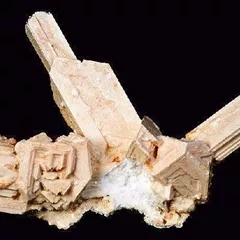
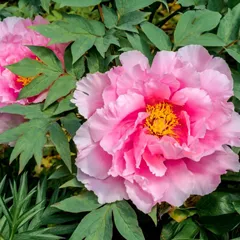
The top herbs in Da Huang Mu Dan Pi Tang are Rhubarb (Da Huang), Mirabilites (Mang Xiao) and Mudan Peony Bark (Mu Dan Pi)
Da Huang Mu Dan Pi Tang
Source date: 220 AD
Number of ingredients: 5 herbs
Key actions: Clears Stagnant Heat in the intestines. Reduces swelling and disperses lumps.
Formula summary
Da Huang Mu Dan Pi Tang is a 5-ingredient Chinese Medicine formula. Invented in 220 AD, it belongs to the category of formulas that clear internal abscesses and sores.
Besides Blood Stagnation, Da Huang Mu Dan Pi Tang is also used to treat Blood Stagnation with Heat.


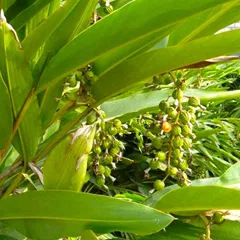
The top herbs in Dan Shen Yin are Red Sage Roots (Dan Shen), Sandalwood (Tan Xiang) and Amomum Fruits (Sha Ren)
Dan Shen Yin
Source date: 1801 AD
Number of ingredients: 3 herbs
Key actions: Invigorates the Blood and removes Blood Stagnation . Promote Qi movement . Relieves pain .
Formula summary
Dan Shen Yin is a 3-ingredient Chinese Medicine formula. Invented in 1801 AD, it belongs to the category of formulas that invigorate Blood and dispel Blood Stagnation.
Besides Blood Stagnation, Dan Shen Yin is also used to treat Qi And Blood Stagnation.
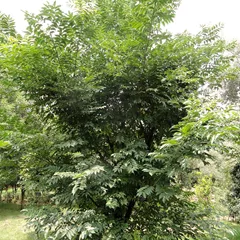
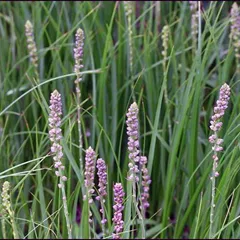

The top herbs in San Zhong Kui Jian Tang are Phellodendron Bark (Huang Bo), Anemarrhena Rhizomes (Zhi Mu) and Chinese Gentian (Long Dan Cao)
San Zhong Kui Jian Tang
Source date: 1336 AD
Number of ingredients: 17 herbs
Key actions: Clears Heat and resolves Toxicity. Reduces swelling. Induces ulceration. Moves the Blood and dispels stasis .
Formula summary
San Zhong Kui Jian Tang is a 17-ingredient Chinese Medicine formula. Invented in 1336 AD, it belongs to the category of formulas that clear external abscesses and sores.
Besides Blood Stagnation, San Zhong Kui Jian Tang is also used to treat Toxic-Heat.

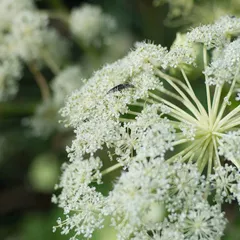

The top herbs in Hai Tong Pi Tang are Erythrinae Barks (Hai Tong Pi), Angelica Roots (Bai Zhi) and Garden Balsam Stems (Tou Gu Cao)
Hai Tong Pi Tang
Source date: 1742 AD
Number of ingredients: 12 herbs
Key actions: Invigorates the Blood. Disperses swelling. Dispels Wind, Dampness and Cold. Removes Stagnation and relieves pain.
Formula summary
Hai Tong Pi Tang is a 12-ingredient Chinese Medicine formula. Invented in 1742 AD, it belongs to the category of external formulas for External disorders.
Besides Blood Stagnation, Hai Tong Pi Tang is also used to treat Damp-Wind.



The top herbs in Di Dang Tang are Leeches (Shui Zhi), Tabanus Horseflies (Meng Chong) and Peach Kernels (Tao Ren)
Di Dang Tang
Source date: 220 AD
Number of ingredients: 4 herbs
Key actions: Breaks up and dispels Blood Stagnation .
Formula summary
Di Dang Tang is a 4-ingredient Chinese Medicine formula. Invented in 220 AD, it belongs to the category of formulas that invigorate Blood and dispel Blood Stagnation.



The top herbs in Da Huang Zhe Chong Wan are Rhubarb (Da Huang), Ground Beetles (Tu Bie Chong) and Peach Kernels (Tao Ren)
Da Huang Zhe Chong Wan
Source date: 220 AD
Number of ingredients: 12 herbs
Key actions: Breaks up and dispels Blood Stagnation. Generates new Blood .
Formula summary
Da Huang Zhe Chong Wan is a 12-ingredient Chinese Medicine formula. Invented in 220 AD, it belongs to the category of formulas that invigorate Blood and dispel Blood Stagnation.



The top herbs in Huang Qi Gui Zhi Wu Wu Tang are Milkvetch Roots (Huang Qi), Cinnamon Twigs (Gui Zhi) and White Peony Roots (Bai Shao)
Huang Qi Gui Zhi Wu Wu Tang
Source date: 220 AD
Number of ingredients: 5 herbs
Key actions: Augments the Qi. Warms and harmonizes the channels. Unblocks painful obstruction .
Formula summary
Huang Qi Gui Zhi Wu Wu Tang is a 5-ingredient Chinese Medicine formula. Invented in 220 AD, it belongs to the category of formulas that warm the Meridians and disperse Cold.
Related conditions
Please keep in mind that a Western Medicine condition can be caused by several Chinese Medicine patterns of disharmony and vice versa. As such a patient suffering from one of the conditions below will not necessarily be suffering from Blood Stagnation, it is just one pattern that's commonly associated with the condition. Click on a condition to learn what other patterns it's associated with.
Intermenstrual bleeding Heavy menstruation Abnormal uterine bleeding Scanty menstruation
Special highlight: the link between scanty menstruation and Blood Stagnation
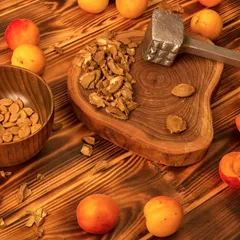
Peach Kernels (Tao Ren) is the key herb for Tao Hong Si Wu Tang, a formula used for scanty menstruation caused by Blood Stagnation
Typical symptoms for scanty menstruation caused by Blood Stagnation: Scanty periods Painful period Abdominal pain Dark colored blood Dark clots in menstrual blood Abdominal distention and fullness
Recommended herbal formulas: Tao Hong Si Wu Tang, Ge Xia Zhu Yu Tang, Shao Fu Zhu Yu Tang
Blood Stagnation in the Uterus can be caused by traumas and abdominal surgery, especially due to the adhesions formed after repeated operations. Another cause is when emotional stress leads to Liver Qi stagnation which itself can lead to Liver Blood Stagnation if the situation becomes chronic.
Blood Stagnation can also be caused by internal Cold in the Uterus. It is a common reason for young school girls who have scanty period because they do sport outdoor on cold and damp days and don't wear...Read more about scanty menstruation
Special highlight: the link between abnormal uterine bleeding and Blood Stagnation

Peach Kernels (Tao Ren) is the key herb for Tao Hong Si Wu Tang, a formula used for abnormal uterine bleeding caused by Blood Stagnation
Typical symptoms for abnormal uterine bleeding caused by Blood Stagnation: Dark face Hesitant periods Premenstrual pain Dark colored blood Dark clots in menstrual blood Abdominal distention and fullness
Recommended herbal formulas: Tao Hong Si Wu Tang, Shi Xiao San
The Blood Stagnation type of abnormal uterine bleeding is characterized by dark clots and dark menstruation color. The periods are unpredictable as they seem to stop but then start again trickling for a while or even with a flood. There is often premenstrual pain as well.
The pathology is that the stagnant Blood accumulates in the Uterus and the vessels. Therefore the newly-created Blood has no place to go and spills out. Women just went through childbirth often experience Blood Stagnation and...Read more about abnormal uterine bleeding
Consequence patterns
When Blood stagnates, it blocks the vessels and accumulate Heat, which then cause bleeding with very dark Blood.
When Blood stagnates, it blocks the vessels and accumulate Heat, which then cause bleeding with very dark Blood and often clots. The volume is comparatively scanty as the majority of Blood are stagnated.
If the Loss of Blood is caused by other type of Heat in the Blood, the quantity is often profuse and the color is red or dark.
